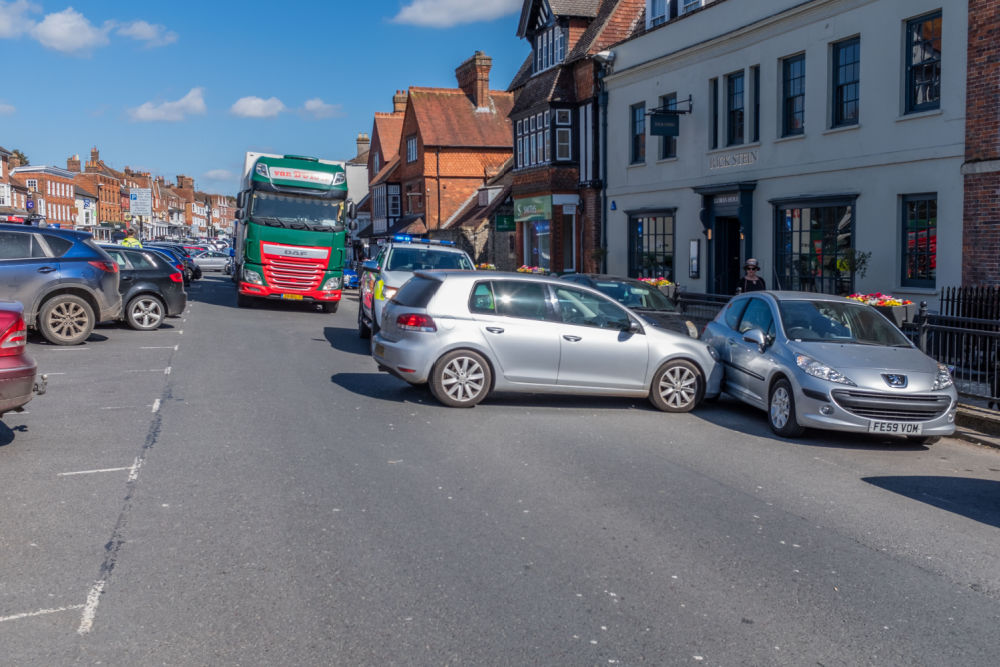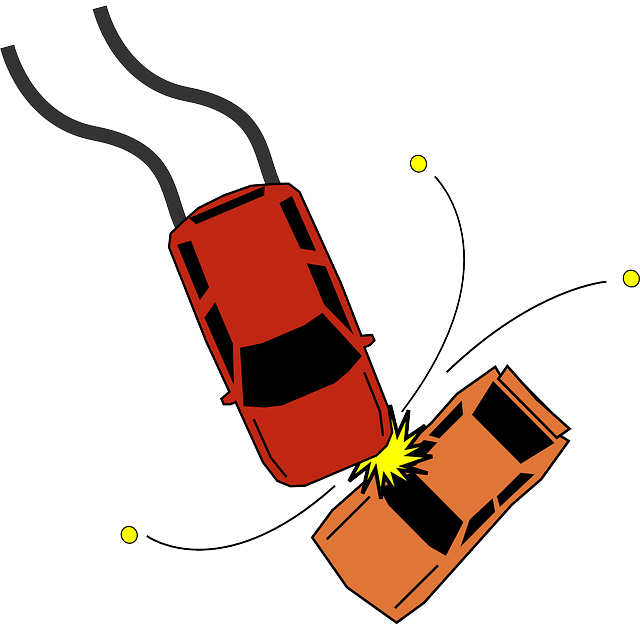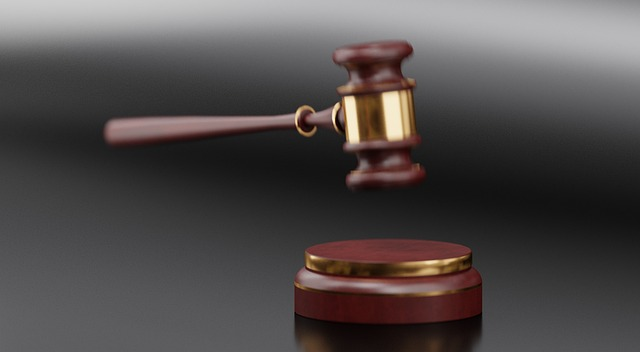T-bone car accidents, also known as side-impact collisions, are among the most common types of crashes on the roadways of Georgia. These types of accidents can cause serious injuries, extensive property damage, and even fatalities. If you are involved in a T-bone car accident in Georgia, it is essential to determine who is at fault. In this article, we will discuss the factors that determine fault in T-bone accidents in Georgia.

Understanding T-Bone Car Accidents
T-bone car accidents occur when one vehicle strikes the side of another vehicle, forming a "T" shape. T-bone accidents and vehicle crashes can occur for a variety of reasons, but some of the leading causes include:
- Running red lights or stop signs: Drivers who run red lights or fail to stop at stop signs are a common cause of T-bone accidents, as they can collide with oncoming vehicles that have the right of way.
- Distracted driving: Drivers who are distracted by their phones, passengers, or other distractions are more likely to cause T-bone accidents by failing to pay attention to the road and other vehicles.
- Failure to yield: Drivers who fail to yield to other vehicles when turning or merging can cause T-bone collisions by cutting off other drivers and forcing them to swerve or brake suddenly.
- Speeding: Speeding is a common cause of T-bone accidents, as drivers who are traveling too fast may be unable to stop in time to avoid colliding with other vehicles.
- Driving under the influence: Drivers who are under the influence of drugs or alcohol are more likely to cause T-bone accidents by driving erratically, swerving into other lanes, or failing to yield to other vehicles.
Determining Fault in T-Bone Car Accidents
In Georgia, fault in car accidents is determined based on the principles of negligence. Negligence occurs when a person fails to exercise reasonable care, and this failure causes harm to another person. To determine fault in a T-bone car accident, the following factors are typically considered:
Traffic Laws
Traffic laws exist to regulate the movement of vehicles on Georgia's roadways. If a driver violates a traffic law, such as running a red traffic light or stop sign, they are typically considered to be at fault for the resulting accident.
Right-of-Way
The right-of-way is the legal right to proceed with a movement or action, such as turning or crossing an intersection. If the other driver fails to yield the right-of-way oncoming traffic, they may be at fault for a T-bone collision.
Speed
Driving at an excessive speed can make it difficult other drivers to stop or react to changing of traffic lights or conditions. If a driver is traveling too fast, and the driver loses control and causes a T-bone collision, they may be at fault.

Impaired Driving
Driving under the influence of drugs or alcohol is illegal in Georgia. If the other driver causes a T-bone car accident while impaired, they are typically considered to be at fault.
Distracted Driving
Distracted driving, such as texting, eating, or applying makeup, can take a driver's attention away from the road and cause a T-bone accident. If a driver's negligence is distracted and causes an accident, they may be at fault.

Comparative Negligence
Georgia is a comparative negligence state, which means that fault in a car accident can be shared among multiple parties. For example, if one driver runs a red light and causes a T-bone accident, but the other driver was also on green light and speeding, both drivers may be found to be at fault to the accident scene some degree.

What Does a T-bone Car Accident Look Like?
Here's what it might look like if you're in a t-bone collision:
- Sudden Impact: T-bone crashes happen suddenly, and without warning. The impact can be jarring, and you may feel a sudden jolt as your car is hit from the side.
- Loud Noise: A t-bone accident can also be very loud. The sound of metal crunching together and glass shattering can be deafening, and may even cause hearing damage.
- Vehicle Movement: Depending on the speed of the other vehicle, your car may be pushed sideways or even spun around in the intersection. This can be disorienting and make it difficult to know which direction you're facing.
- Airbags Deploying: If your car is equipped with airbags, they may deploy upon impact. This can be startling and may even cause injury.
- Broken Glass: In a t-bone accident, the force of the impact can cause windows to shatter and glass to fly everywhere. This can cause cuts and lacerations, as well as damage to your eyes.
- Damage to Your Car: T-bone accidents can cause significant damage to your vehicle, including crushed doors, bent frames, and shattered windows.
- Pain and Injuries: T-bone collisions can cause serious injuries, including broken bones, traumatic brain injuries, and spinal cord injuries. You may experience pain in your neck, back, or head, as well as bruising and swelling.
If you're in a t-bone car accident, it's essential to seek medical attention immediately. Even if you don't feel any pain or discomfort right away, some injuries can take hours or even days to become apparent.
What Are Some Common Injuries in a T-Bone Accident?
T-bone collisions can result in a variety of injuries, ranging from minor cuts and bruises to catastrophic injuries that can have long-term or permanent effects on a person's health and quality of life. Some of the most common injuries sustained by vehicles involved in a T-bone collision include:
- Traumatic brain injury (TBIs): TBIs are a serious type of injury that can result from a blow to the head or violent shaking of the brain inside the skull. They can range from mild concussions to severe brain damage that can affect a person's cognitive abilities, motor skills, and emotional well-being.
- Spinal cord injuries: T-bone collisions can also result in spinal cord injuries, which can cause partial or complete paralysis, loss of sensation, and other serious complications.
- Internal injuries: The force of a T-bone collision can cause internal injuries such as internal bleeding, organ damage, and other types of internal trauma that can be life-threatening.
- Broken bones: T-bone collisions can also result in broken bones, which can range from minor fractures to more severe breaks that require surgery and other medical treatment.
- Soft tissue injuries: Whiplash, strains, sprains, and other soft tissue injuries are also common in a T-bone accident, and can cause pain, stiffness, and reduced mobility.

If you've been involved in a T-bone collision, it's important to seek medical attention as soon as possible, even if you feel fine at first. Some injuries may not become apparent until hours or even days after the first accident occurred, so it's important to get checked out to ensure that you receive the proper medical treatment and care.
Who Is Responsible For Medical Bills and Lost Wages After a T-Bone Car Accident?
If you've been involved in a T-bone crash, you may be wondering who is responsible for paying for your medical bills and lost wages. In Georgia, the at-fault driver is generally responsible for paying for the damages caused by the accident. However, if the other driver is uninsured or underinsured, you may need to file a personal injury claim to recover damages. In some cases, you may be able to recover damages for lost wages, medical expenses, and other damages from your own insurance company if you have uninsured or underinsured motorist coverage.

If you've been seriously injured in a T-bone collision, you may need to file a wrongful death claim if a loved one has died as a result of the same t-bone accident injuries. To protect your legal rights and ensure that you receive the compensation you deserve, it's important to seek the advice of an experienced accident or personal injury lawyer.
Hiring an Attorney
If you are t-boned in an accident in Georgia, it is essential to seek the advice of a car accident attorney. Your personal injury attorney can help you navigate the complexities of Georgia's car accident laws, determine fault, and recover damages for your injuries and property damage.
What are typical insurance settlement amounts for t-bone crash injuries?
There is no one-size-fits-all answer to this question, as the settlement amount for a T-bone accident injury will depend on a variety of factors, including the severity of the injury, the cost of medical treatment, and the extent of the victim's pain and suffering. In general, however, victims of car accidents may be able to recover damages for expenses, lost wages, and pain and suffering, among other losses.
Some typical settlement amounts for T-bone accident injuries might include:
- Minor injuries: For relatively minor injuries, such as bruises or sprains, the settlement amount may be relatively low, typically ranging from a few thousand dollars to around $10,000.
- Moderate injuries: For more serious injuries, such as broken bones or head injuries, the settlement amount may be higher, typically ranging from $10,000 to $50,000.
- Severe injuries: For catastrophic injuries, such as spinal cord injuries or traumatic brain injuries, the settlement amount may be much higher, ranging from $100,000 to millions of dollars.
It's important to note, however, that these are just general guidelines, and the actual settlement amount for a T-bone accident injury will depend on the unique circumstances of each case. To get a better sense of what you might be able to recover in a personal injury claim or settlement, it's best to consult with an experienced car accident lawyer who can review your case and help you understand your legal options.

Conclusion
Determining fault in a T-bone car accident in Georgia can be a complex process. Factors in car accident cases such as traffic laws, right-of-way, speed, impaired driving, and distracted driving can all play a role in determining fault. It is important to seek the advice of a car accident lawyer to help you navigate Georgia's laws and recover damages for your injuries and property damage.
FAQs
Q: Who is at fault in a T-bone accident in Georgia?
A: The driver who caused the accident by failing to yield, running a red light, or violating another traffic law is typically considered at fault in T-bone collisions in Georgia. However, fault for most t bone accidents can be shared between both drivers or even multiple parties in some cases.
Q: What should I do if I'm involved in a T-bone car crash in Georgia?
A: If you're involved in a T-bone car accident in Georgia, the first thing you should do is seek medical attention for any injuries sustained. You should also call the police and exchange insurance and contact information with the other vehicle and driver. It's important to avoid admitting fault or making any statements that could be used against you later.
Q: Can I sue for injuries sustained in a T-bone car accident in Georgia?
A: Yes, you may be able to file an injury claim against the other driver involved and their insurance company for the severe injuries you sustained in a T-bone car accident in Georgia. You should consult with an car accident lawyer to discuss your options.
Q: What damages can I recover in a T-bone accident case in Georgia?
A: If you're successful in your claim, you may be able to recover damages for medical expenses, lost wages, pain and suffering, and other economic and non-economic losses related to the accident.
Q: How long do I have to file an injury claim for a T-bone car accident in Georgia?
A: In Georgia, the statute of limitations for personal injury claims is two years from the date of the accident. This means that you must file your claim within two years of car accident injuries or risk losing your right to seek compensation. It's important to consult with an experienced personal injury lawyer as soon as possible after the accident to ensure that your rights are protected.
In summary, determining fault in a T-bone accident in Georgia can be a complex process. Factors such as traffic laws, right-of-way, speed, impaired driving, and distracted driving can all play a role in a car t-bone accident causes. It is important to seek the advice of an experienced car accident attorney to help you navigate Georgia's laws and recover damages for your injuries and property damage. Remember to always drive safely and obey traffic laws to help prevent T-bone car collisions from happening in the first place.

